In 2003, a tiny Khasi village close to the Meghalaya-Bangladesh border shot to fame when it was declared the cleanest village in Asia. Mawlynnong, a village boasting a 90% literacy rate was home to villagers who understood and valued the importance of good civic sense. Soon, Mawlynnong became the model of development for other villages and began to draw in tourists as media coverage grew. Today, the village has a little under 1000 residents and sees hundreds of visitors every week.
How to get to Mawlynnong
Mawlynnong is at a 90-km distance or a 3-hour drive from Shillong. From Cherrapunji, it is around 1 hour away. You can fly into Shillong and then opt for a cab, a bus, or my favourite – a self-drive car, which offers you the flexibility to stop for chai breaks and to admire the stunning scenery.
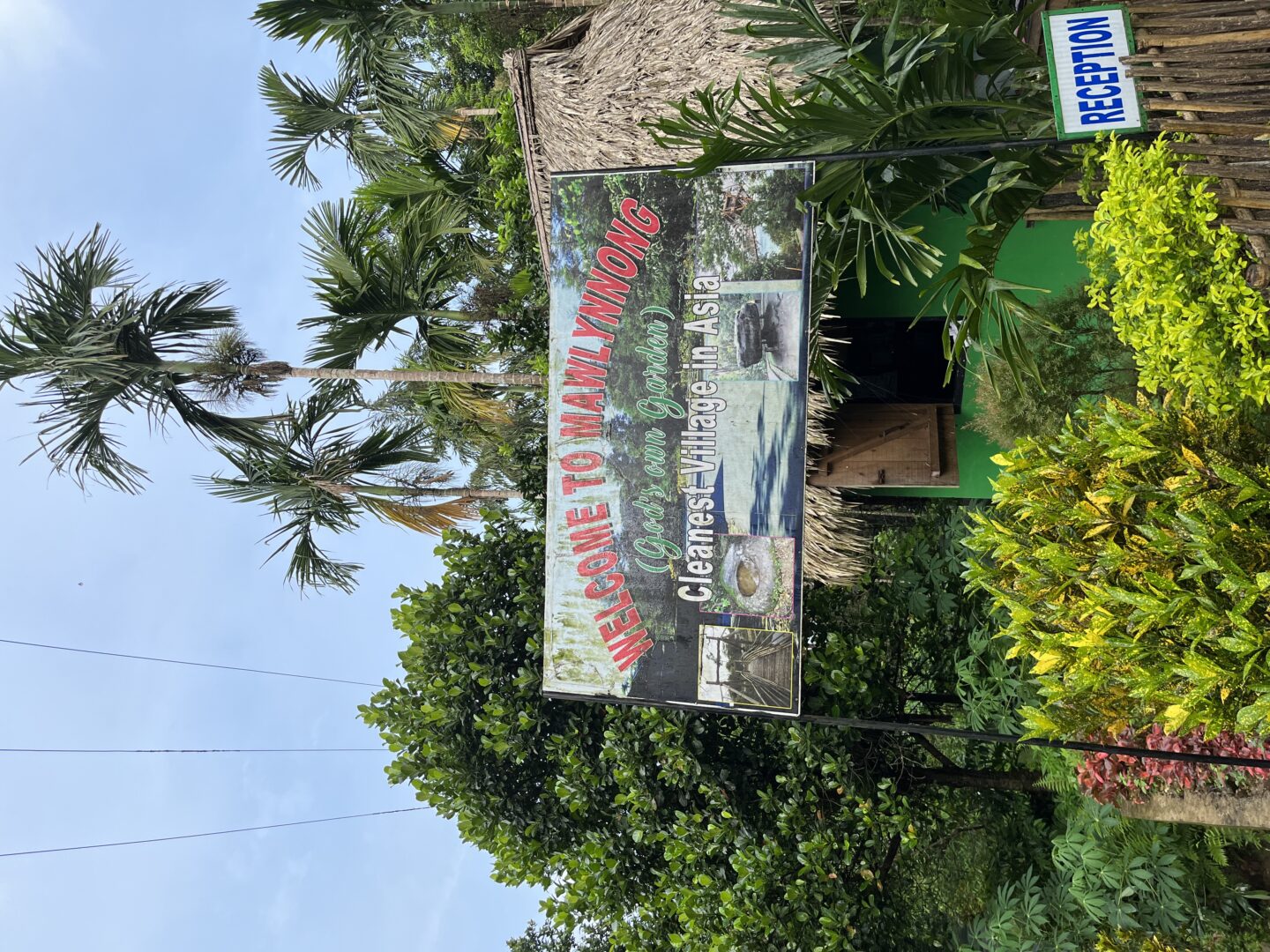
Best time to visit
Due to its pleasant temperatures, summer (April-June) is a great time to visit, but if you can tolerate days of rain and would like to experience the rainfall in this area known for its thunderous showers, a visit in monsoons (July – November) is an item to have on your bucket list. It can get pretty cold in the winter but there are attractions that are best viewed during that season – such as the crystal-clear Dawki Lake.
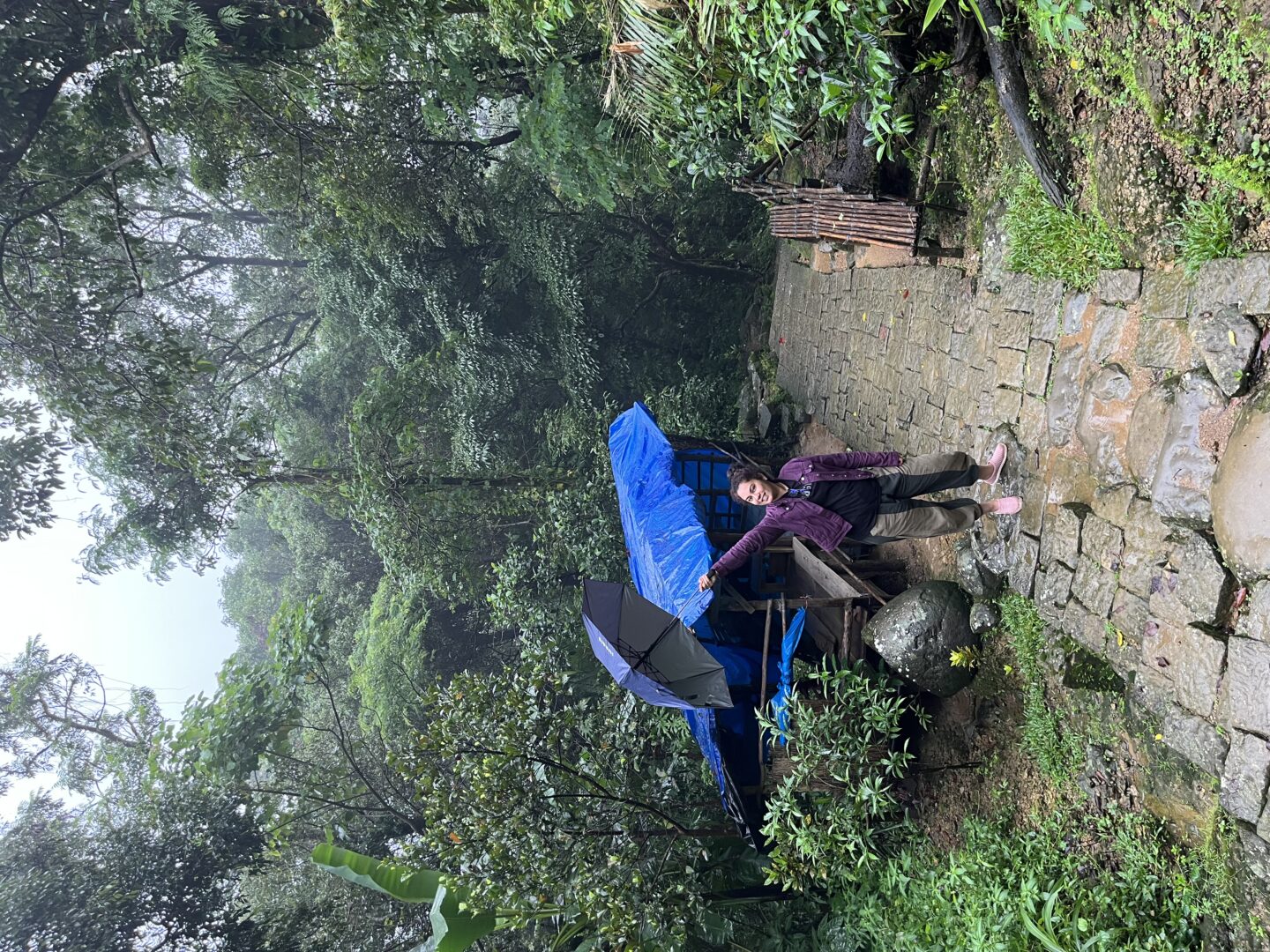
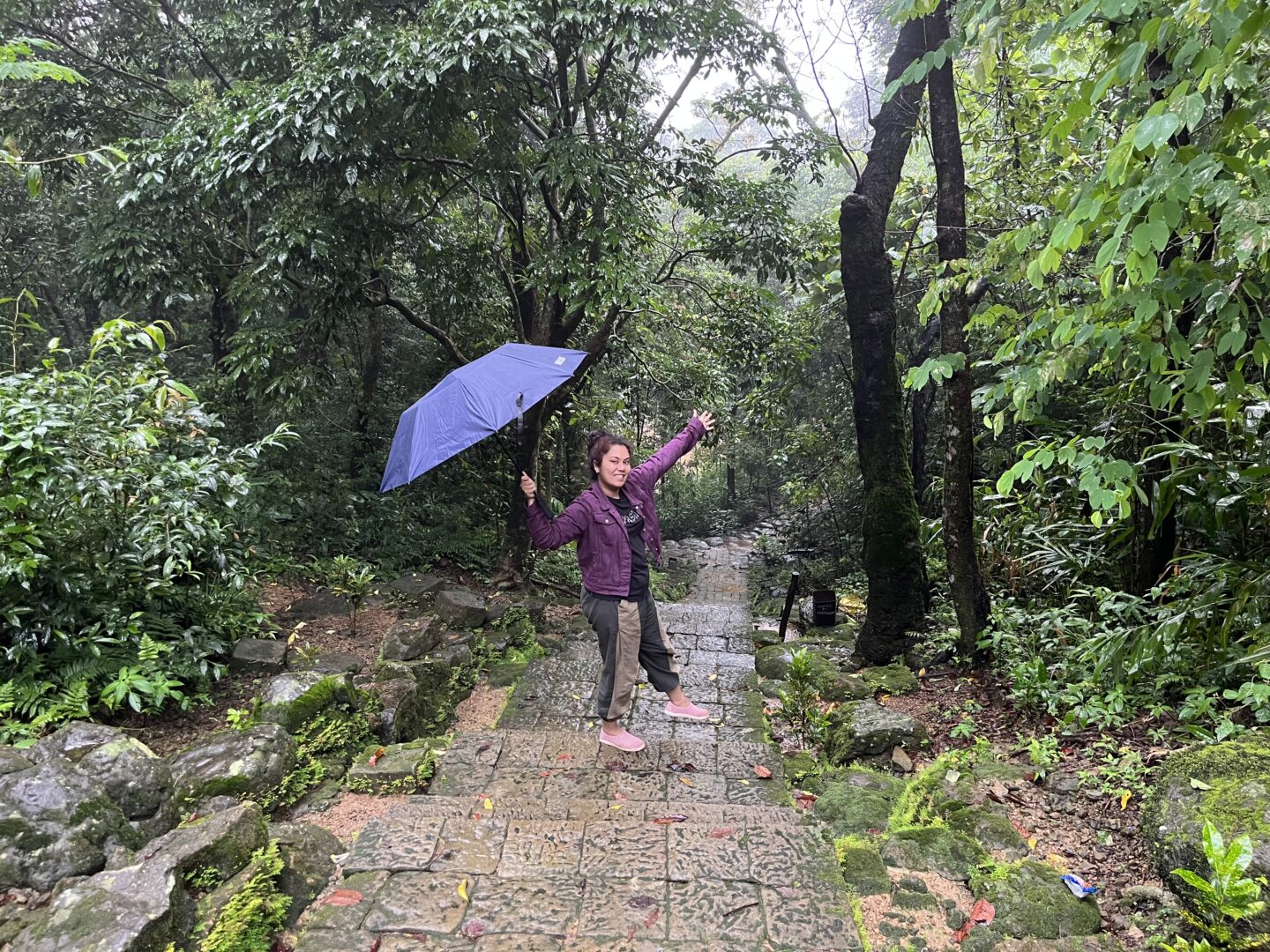
Visitors to Mawlynnong need to pay an entrance fee of Rs. 100 each to enter and once you do, there is also a parking fee. I’m a little on the fence about how I feel about this. In my opinion, if visitors are being charged to see a village, it will obviously have the funds to ensure that it is clean and well-kept, taking away from the essence of it all. On the other hand, having streams of tourists visit the village, it is natural to want to capitalize on the footfall and make money off the invasion of space and privacy.
Another thing worth noting is that visitors cannot drive through the village. One needs to park in the designated parking zone and see the village on foot.
Where to stay in Mawlynnong
Mawlynnong has a handful of down-to-earth homestays run by locals and you can book a stay for around Rs. 1500-Rs. 2000 a night. There are no hotels here – luxury or otherwise. In my opinion, Mawlynnong does not offer much to see and do and a walk through the village would suffice, hence there is no need to stay overnight. For food, a couple of restaurants are available, offering a simple, limited menu, but homestays would offer food, too.
View this post on Instagram
I stayed a little away from the village, at a place called DJ Wood’s Cabin as I found it to be quite attractive when I drove by. I reached the village by 3 PM, took a walk, went and checked in to my homestay at around 5 PM, and dropped into the village again the next morning to trek to a living root bridge before making my way back to Shillong in the afternoon. Details of my stay in Mawlynnong, Cherrapunji, and Shillong are here.
Things to do in Mawlynnong
Being a tiny village, there is not much to do but walk around, enjoy the idyllic rustic setting and observe villagers go about their day. Here are a few things you could do:
Trek to the Jingmaham Living Root Bridge: Meghalaya in general has beautiful living root bridges – but most of them, including the most famous one in Cherrapunji, come at the end of an arduous trek that can last up to a day, one side. The living root bridge at Mawlynnong is one of the few that require a short, easy trek and if you’ve always dreamed of looking at this marvel where man and nature come together to create something beautiful, this is your chance to do so without breaking a sweat. Made over centuries by guiding the roots of trees and intertwining them, the bridges are then strengthened with mud and stone and can bear the weight of several humans at once.
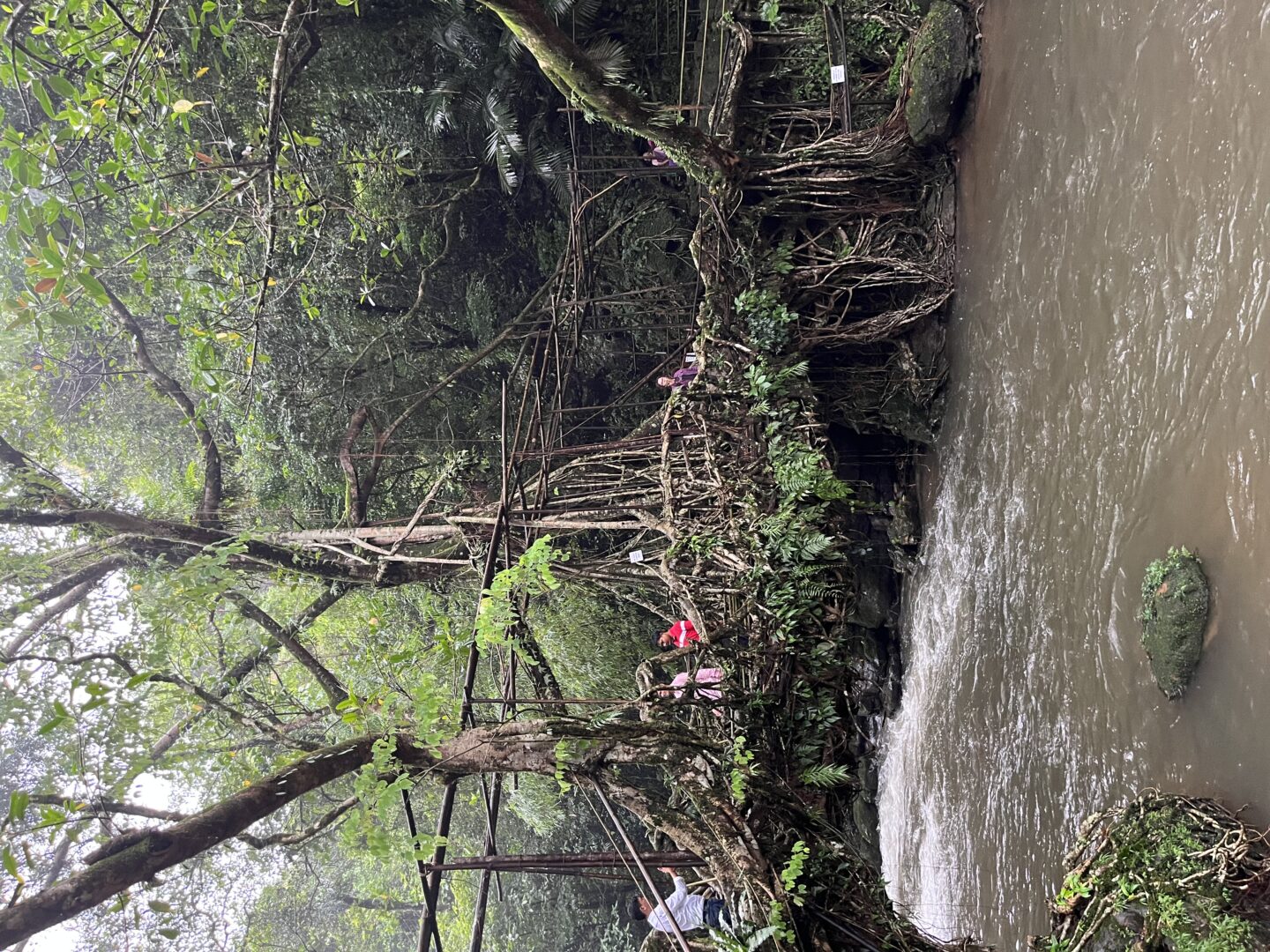
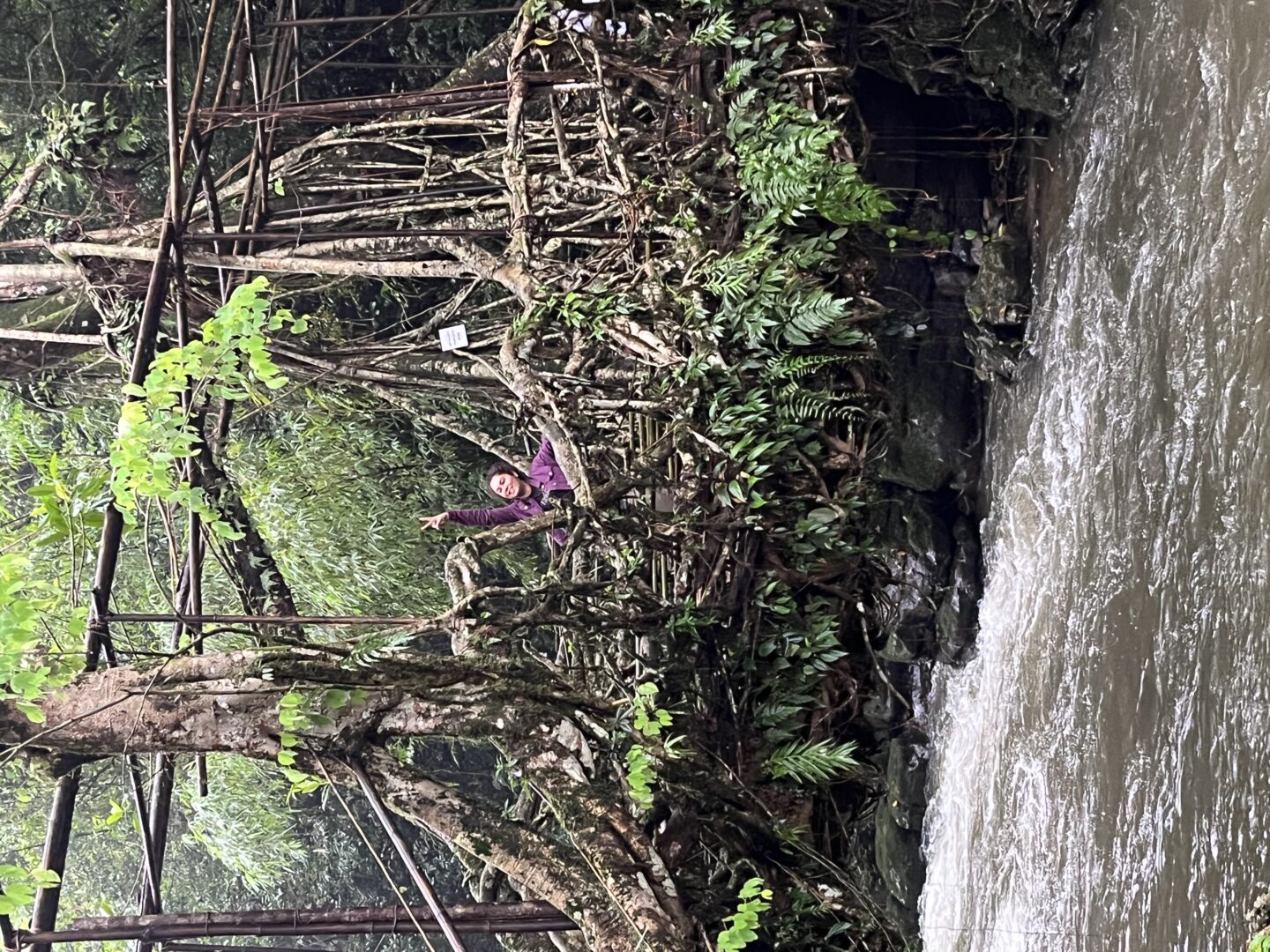
Climb up the bamboo watch tower: It appears as if the locals have gone out of their way to make the village more interesting by adding little attractions like this. The bamboo watch tower is one such thing that can take all of 3 minutes to see, but deserves mention in this list because of the scarcity of things to do in this little hamlet. Going up to the tower will offer you a scenic bird’s eye view of the village.
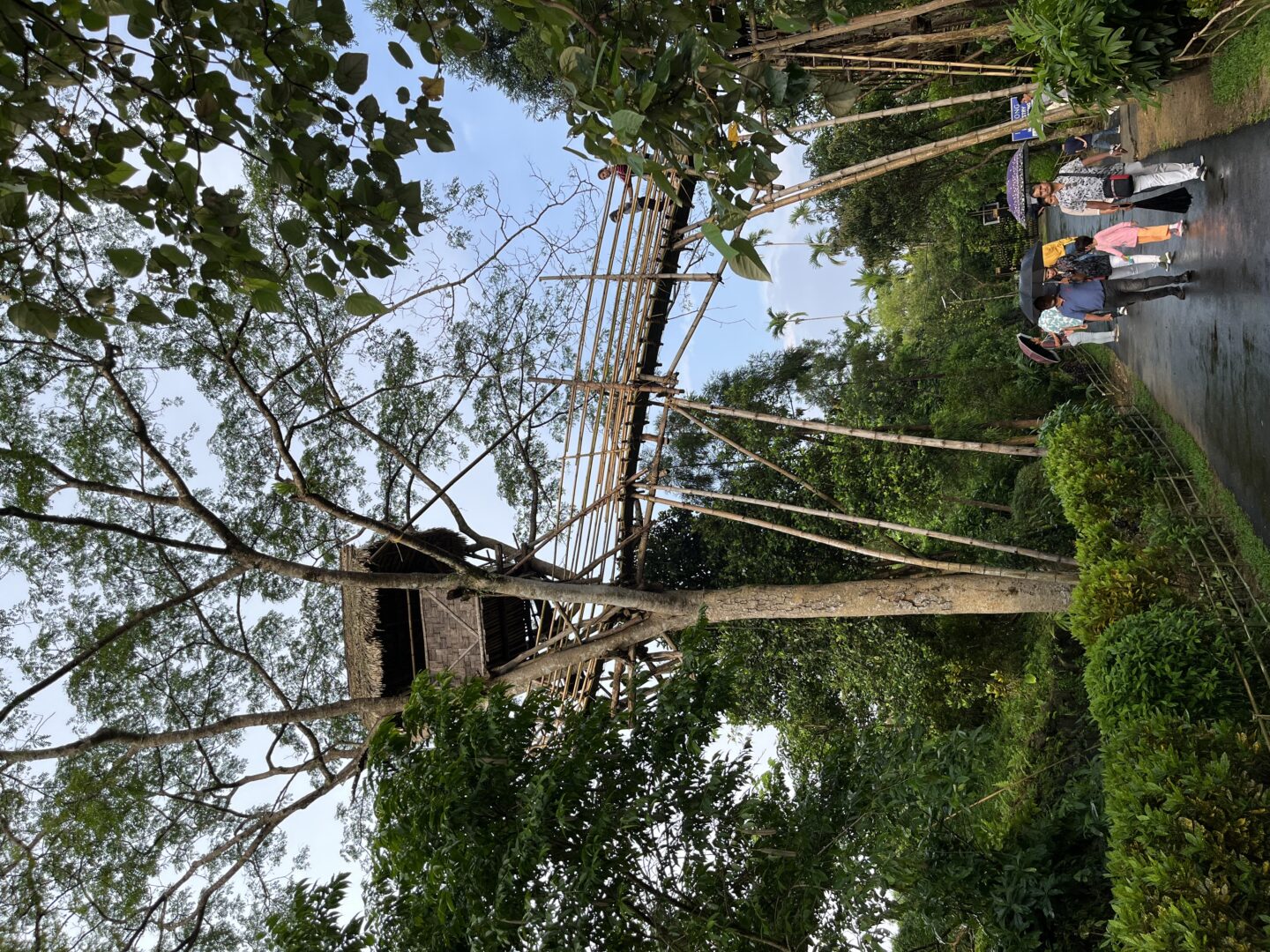
Visit the Church of Epiphany – Meghalaya has a Catholic majority and you will stumble across a church almost everywhere you go. The church at Mawlynnong doesn’t draw attention due to its grand architecture or interesting history, but because it looks like it belongs on a postcard. A cobblestone lane leading up to an alluring entrance of the church, the stained glass windows and greenery that surrounds it – it’s all very picture-postcard worthy!
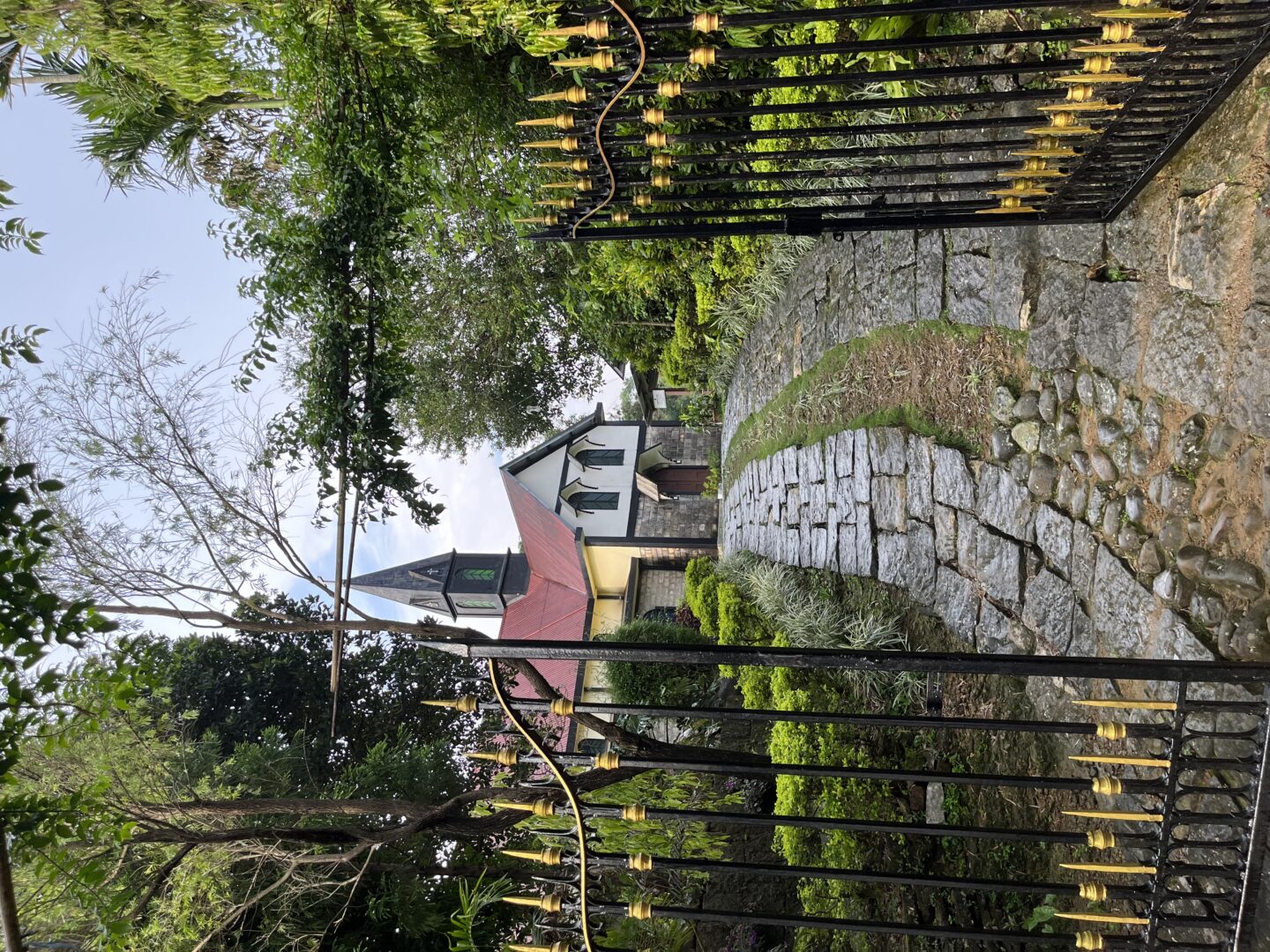
Visit the balancing rock – Or don’t. It really is what it sounds like – a large rock balancing precariously on a tiny rock. According to local legend, this was a shrine of the Khasi tribes before they adopted Christianity. It costs Rs. 10 to enter, but you won’t be missing anything if you skip it.
Other interesting facts
Walk around the village for a couple of hours and rest on benches when your feet need a break. No matter where you are, you’ll spot wooden picket fences, beautiful blooms, and orchids, and hear the sound of children playing.
Plastic and smoking are banned at Mawlynnong, so do carry your own bottle of water and leave your cigarettes behind. Any plastic brought in by tourists will need to be taken back as only bio-degradable waste can be left behind in the bamboo dustbins at Mawlynnong. Even though the region receives heavy rainfall and the streams are always running full, the villagers practice rainwater harvesting – which is quite rare to see in homes, let alone villages.
Mawlynnong has been given the monicker “God’s own garden,” which is indeed very apt. When you spend a couple of hours here taking in the verdant foliage, the colours of the flowers, the sounds of the insets, the birds, and the streams – you can’t help but take a little bit of that serenity back with you.
I hope you enjoyed reading this blog post. For more blog posts on offbeat, picturesque destinations, check out my blogs on Pelling in Sikkim and Pollachi and Pichavaram in Tamil Nadu.
